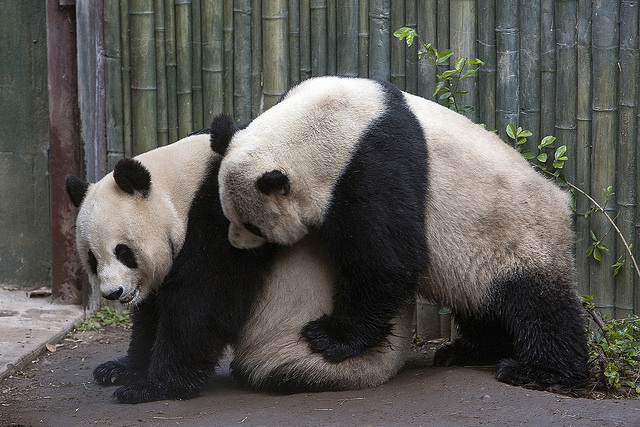San Diego Zoo Turns Off Panda Cam for Mating Time

If the San Diego Zoo's panda cam is a daily source of procrastination, we have some bad news for you: Footage may be a little spotty over the next few days because it's mating season.
The good news is that the critter cam's coverage will be back to normal shortly. Pandas only have a 48-to-72-hour window each year to make a baby, so time is of the essence for Bai Yun and Gao Gao.
Officials at the San Diego Zoo said the panda keepers had been watching for signs that the female adult, Bai Yun, is entering estrus. They had been monitoring her hormone levels and looking out for specific behavioral cues, such as scent-marking and vocalizing. [Animal Sex: 7 Tales of Naughty Acts in the Wild]
Finally, on Tuesday morning (March 10), Bai Yun and Gao Gao were put in the same enclosure for their first breeding attempt since 2012. The panda viewing area was closed off and the panda cam was turned off while the keepers observed the bears go at it.
The zoo released some pictures that suggest the bears' encounter was at least, well, amorous. But was it successful? It will be months before the keepers know.
Even if they don't conceive, female pandas have an annoying habit of faking pregnancy. Since fetal pandas are so tiny relative to their mothers, it's also difficult to detect true pregnancy until a cub materializes (or doesn't) at the end of the summer.
Gao Gao and Bai Yun have already produced five cubs: Mei Sheng, Su Lin, Zhen Zhen, Yun Zi and the latest, Xiao Liwu, who was born in July 2012 and is still on display at the zoo.
Sign up for the Live Science daily newsletter now
Get the world’s most fascinating discoveries delivered straight to your inbox.
Today, wild giant pandas are found only in China. They are considered an endangered species, and captive breeding in zoos is designed to bolster the bears' numbers and genetic diversity.
China stopped giving away pandas as gifts to other countries in the 1980s; instead, the bears are loaned to foreign zoos. Any panda cubs born on U.S. soil are typically put back into China's captive breeding program after a few years.
Just two weeks ago, China released the latest results of its panda census, finding evidence of 1,864 pandas in the wild, Nature reported. That's up from 1,596 pandas counted in 2002.
Follow Megan Gannon on Twitter. Follow us @livescience, Facebook & Google+. Original article on Live Science.

What is 'induced atmospheric vibration' and did it really cause power outages across Spain and Portugal?
'How could it have been allowed to happen?': The threat of 'superbugs' was known from the first antibiotic, but we've failed to stop it.
Yellowstone holds potentially untapped cache of 'carbon-free' helium for rockets, reactors and superconductors










